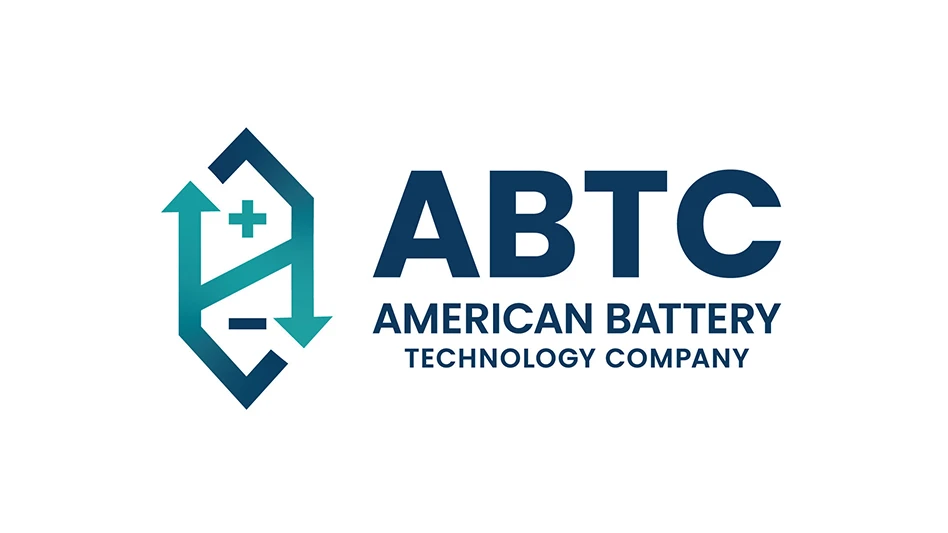 The professional automotive recycling industry does not have to look too far in its rearview mirror to appreciate the type of seismic events that have transformed the American automotive manufacturing industry throughout the past several years. As the Big Three (General Motors, Chrysler and Ford) continue to emerge from the brink of financial ruin with the help of bankruptcy protection and other federal assistance, the U.S. auto manufacturing industry’s foundation and processes have changed so dramatically that its future success now depends on the participation of multiple stakeholders and more innovative market opportunities.
The professional automotive recycling industry does not have to look too far in its rearview mirror to appreciate the type of seismic events that have transformed the American automotive manufacturing industry throughout the past several years. As the Big Three (General Motors, Chrysler and Ford) continue to emerge from the brink of financial ruin with the help of bankruptcy protection and other federal assistance, the U.S. auto manufacturing industry’s foundation and processes have changed so dramatically that its future success now depends on the participation of multiple stakeholders and more innovative market opportunities.
The professional automotive recycling industry is not immune to the effects of such volatile changes within the automotive sector and has responded to these market challenges by adopting new and creative acquisition and consolidation methodologies.
The catalyst for this dramatic transformation is information. There is not a single factor greater than information that is driving the extraordinary changes and advancements within the professional automotive recycling industry. Data drive almost every aspect of a professional automotive recycling business. From the value of automotive parts inventory, insurance claims processing, collision body and mechanical shop estimates to stakeholders’ access to the original equipment (OE) information, data provide the backbone to a sustainable business model for professional automotive recyclers.
Telematics
With the $170 billion auto insurance market facing its own set of unique challenges, automotive insurers around the world are responding with cutting-edge telematics solutions. Through wireless technology, telematics devices record and transmit real-time data from vehicles back to insurers. Insurers can then use this data to develop more sophisticated pricing models, improve risk management assessments and lessen potential losses through enhanced claims processing.
When used in combination with information technology and analytics, telematics gives auto insurers the ability to transform the data explosion into major competitive advantages. Rather than making educated guesses about a driver’s risk based on traditional factors, such as age, gender, miles driven or accident history, insurers can now make pricing judgments based on hard data and focus on indicators with a more definite connection to actual incidents.
According to a recent report by Celent, a research and consulting firm with U.S. offices in Boston, New York and San Francisco, specializing in the application of information technology, the benefits from telematics will go beyond just merely being able to more accurately price risks for insurers. Claim improvement opportunities are possible, including better fraud detection, reduced cycle time between accidents and the first notice of loss, along with quicker and more clear-cut settlements before the involvement of third parties.
The telematics opportunities for insurers also have significant ripple effects within the professional automotive recycling industry. The technology is likely to modify driving behavior and patterns leading to fewer miles driven and fewer accidents. These outcomes will reduce the number of total loss vehicles, resulting in a decrease in the need for quality recycled parts.
In 2010, Progressive Insurance, Cleveland, moved aggressively to the forefront of telematics-based auto insurance with its Snapshot policy coverage. The program is predicated on real-time data collection to calculate risk based on driving habits and mileage. The information is then used to calculate more precise premium rates and routinely results in insurance prices that are, at minimum, 30 percent lower than those offered by the competition to the same drivers. In a Securities and Exchange Commission filing, Progressive says annual premiums for customers choosing the Snapshot policy exceeded $1 billion out of a total of more than $16 billion in net written premiums for 2012. Progressive is not alone in offering telematics-based driver programs. State Farm, Allstate, Hartford and Liberty Mutual also are moving forward with the technology and programs of their own.
Electronic Parts
According to a recent report by U.K.-based IMS Research titled “The World Market for Automotive OEM Electronic Systems – 2013 Edition,” the global market for automotive electronics is set to increase to $240 billion in 2020, an increase of more than 50 percent from the $157 billion in 2010. Driven to new levels of importance by government and automotive manufacturers’ safety initiatives, the proliferation of automotive electronics will challenge the professional automotive recycling community to secure the necessary data that will enable it to compete in this emerging parts procurement sector.
With the explosion of sophisticated computer components in motor vehicles, consumer need for access to quality economic alternatives to new part replacements is growing. Regrettably, consumers are faced with a number of challenges in the procurement of quality recycled OEM (original equipment manufacturer) electronic parts.
While automotive parts interchangeability has existed since the 1930s, the rapid advancement of automotive electronics has made all aspects of the recycled parts industry more difficult. The proliferation of electronic parts makes exact part matches even more critical. A robust parts interchange accessible by professional automotive recyclers has and will continue to be an important service for the industry. However, specific part identification numbers and parts inventory data integration are vital for professional automotive recyclers to efficiently and cost effectively provide consumers’ greater access to quality recycled OEM parts for the repair and service of their motor vehicles.
Data and Inventory Quality
American drivers make nearly 25 million automobile insurance claims each year, and insurers, in turn, spend an estimated $100 billion annually to cover those claims. Most insurers and automotive repair shops use specialized computer software to estimate the cost of repair or the value of replacement in the event of a total loss. These software systems rely heavily on data and play a decisive role in the automotive repair industry. CCC Information Services Inc. and Mitchell International Inc. are two of the largest companies in the estimatics markets. Audatex North America Inc. is another significant competitor for sales of partial loss estimating and total loss valuation software.
As the professional automotive recycling industry matures, so does the level of its electronic integration with the major estimating companies. These companies provide insurance companies, along with collision and mechanical repair shops, direct access to comprehensive recycled parts inventory. In turn, these data create opportunities for professional automotive recyclers to list their parts on millions of repairable estimates each year.
As insurance companies seek greater availability of insurance-quality parts alternatives, the parts solution providers are making significant investments in technology to better filter automotive recycler’s parts inventory. It is here that professional automotive recyclers must ensure that their inventories are meeting the Automotive Recyclers Association (ARA), Manassas, Va., Damage Codes and Parts Grading standards. These important standards allow for the use of unified descriptions among all parties involved in selling, buying and installing recycled automotive parts. The greatest extension of recycled parts integration into estimating systems can eliminate the need for phone calls along with reductions in parts back orders and delays which can slow cycle time.
Automotive Recalls
Professional automotive recyclers process millions of OEM parts per year and resell them to consumers, service repair facilities and other interested parties. Being able to readily distinguish those parts that pose a safety concern is of paramount interest to the industry.
In November 2012, the ARA submitted comments to the National Highway Traffic Safety Administration (NHTSA) calling on the agency to require more comprehensive parts data from the automobile manufacturers. NHTSA is currently drafting regulations that would govern motor vehicle and equipment safety recalls as mandated under the Moving Ahead for Progress in the 21st Century Act (MAP-21), Public Law 112-141, signed into law July 6, 2012.
 ARA supported the MAP-21 legislation because it builds on current requirements that state that, among other things, manufacturers must provide reports to NHTSA on defects in motor vehicles and will now require manufacturers to submit other information for vehicles covered by recall campaigns, including the vehicle identification number (VIN).
ARA supported the MAP-21 legislation because it builds on current requirements that state that, among other things, manufacturers must provide reports to NHTSA on defects in motor vehicles and will now require manufacturers to submit other information for vehicles covered by recall campaigns, including the vehicle identification number (VIN).
To effectively implement the scope and purpose of this new law, ARA maintains that NHTSA also should require vehicle manufacturers to submit information to the database that describes the OE part identification numbers for both the “recalled” part and the “remedied/replaced” part, along with build sheets complete with textual part descriptions, published service and recall bulletins, remedy/repair procedures and all current and superseded numbers for the recalled items.
Once these data are submitted to the database, NHTSA will need to group them in such way that they can be accessed by third parties in a “batch” format so that these parties can download the complete recall database into their locally installed inventory management systems. This will allow individual inventory management systems to integrate this data so that the information reaches all levels of the automotive supply chain in a streamlined manner. Without this data transfer, NHTSA’s efforts to make recall information more available to all consumers in the automotive supply chain will fall short of its intended results.
Adapting to Change
The advancements in motor vehicle design and significant investments in technology that auto manufacturers and insurers are making have changed the way all industries in the American automotive sector must plan for the future. Those seeking to keep up with the rapid transformation of today’s automotive marketplace must likewise adapt and recognize the need for access to data and play a role in deciding how that information is used.
The proliferation of electronic component parts highlights the importance of parts data to the success of the professional automotive recycling industry. The potential benefits of telematics and integrated wireless technology—many of which have yet to be realized or imagined—and increasing electronics integration within estimating software and the insurance industry are themes that will establish themselves as basic characteristics in the future.
The professional automotive recycling industry has experienced drastic changes throughout its history, and automotive recycling businesses have responded by adapting and transforming to remain vibrant and sustainable players in the automotive parts market. More than ever before, data will drive almost every aspect of a professional automotive recycling business. Recognizing this will be fundamental to building sustainable business models in the future. It is with this confidence that ARA is continually working to secure access to data for its members and investing significant educational, governmental and other resources to ensure that its members are fully equipped for the future.
The author is CEO of the Automotive Recyclers Association, Manassas, Va. He can be reached at Michael@a-r-a.org.

Explore the September 2013 Issue
Check out more from this issue and find your next story to read.
Latest from Recycling Today
- Updated: Matalco to close Canton, Ohio, plant
- Metso launches electric Anode Weighing and Casting Machine
- Circular by Shapiro releases '5 for Five' sustainability series
- Graphic Packaging set to close Ohio CRB facility
- Ameripen voices support for Maryland EPR bill
- Maryland county expands curbside recycling to include electronics
- California EPS ban will be enforced
- YKK AP America introduces BetterBillet





